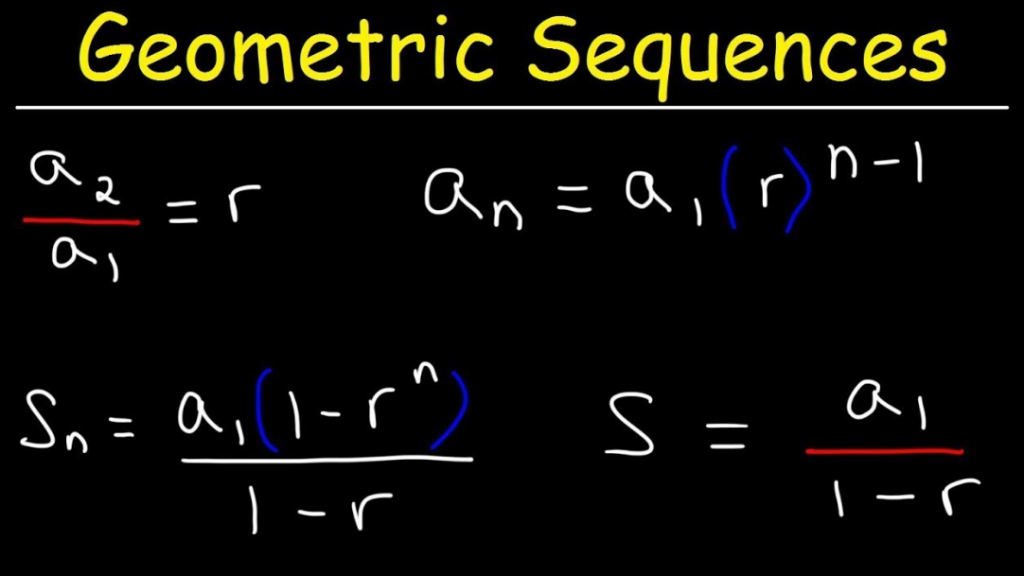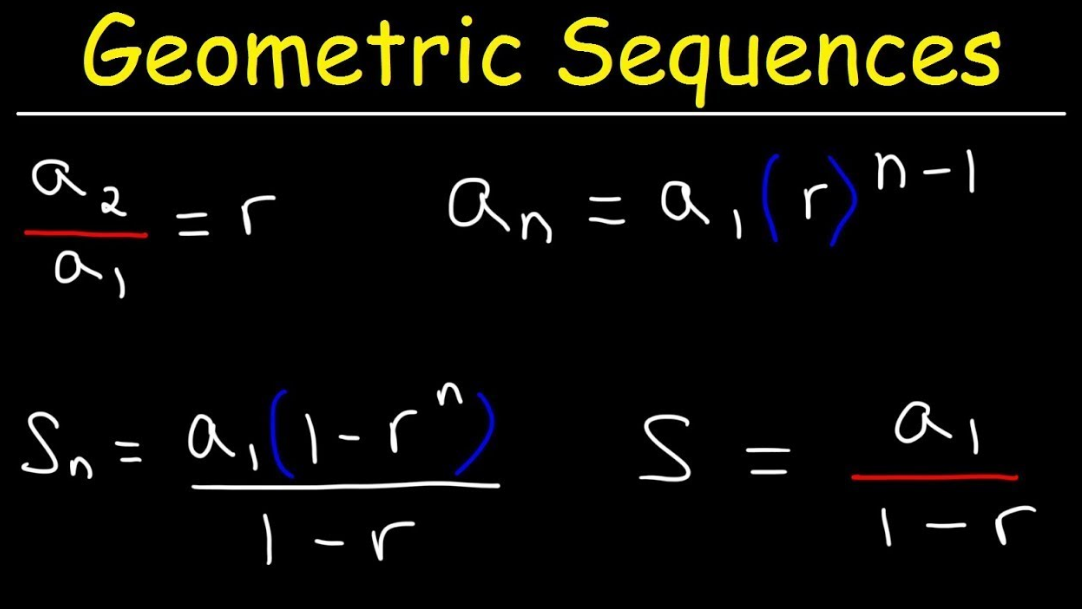The geometric progression is a sequence in which every term bears a constant ratio to its predecessor. These sequences are referred to as geometric progressions. In order to get the next term in the geometric progression, we have to multiply with a fixed term known as the common ratio, every time, and we can also divide the term with the same common ratio to get the previous term in the sequence. Here is an example of a geometric progression: 2, 4, 8, 16, 32, …… having a common ratio of 2.
An infinite series or a finite series can be associated with geometric progressions. Geometric progressions can involve negative or positive integers as the common ratio. The purpose of this section is to teach you how the geometric progression formulas work as well as the types of geometric progressions.

Table of Contents
Geometric Progression Introduction
Geometric progressions are special types of sequences in which successive terms bear a constant ratio known as the common ratio. Geometric progression is also known as GP. The geometric sequence is usually represented in form a, ar, ar2.… where a is the first term and r is the common ratio of the sequence. The common ratio can be both positive and negative. To find the terms of a geometric series, we only need the first term and the constant ratio.
The geometric progression is of two types. Geometric progressions can be divided into two types based on the number of terms. There are two types of geometric progressions: the finite geometric progression and the infinite geometric progression. Listed below are the details of each geometric progression.
Finite geometric progression
Finite geometric progressions are geometric sequences that contain a finite number of terms. It is the sequence in which the last term is defined. For example 1/2,1/4,1/8,1/16,…,1/32768 is a finite geometric series where the last term is 1/32768.
Infinite geometric progression
A geometric progression that contains an infinite number of terms is an infinite geometric progression. It is the sequence where the last term is not defined. For example, 3, −6, +12, −24, +… is an infinite series where the last term is not defined.
Geometric Progression Formula
To find the nth term in the sequence, use the geometric progression formula. We require the first term in the geometric progression and the common ratio to determine the nth term. Calculate the common ratio by finding the ratio of any term to its preceding term, if the common ratio is unknown. In the mathematical progression, the nth term is given by:
Anan = arn-1
Where
- a is the first term
- r is the common ratio
- and n is the number of the term we want to find.
Geometric Progression Sum Formula
The geometric progression sum formula is used to calculate the sum of all the terms in a geometric sequence. As we read in the previous section, geometric sequence is of two types, finite and infinite geometric sequences, and the sum of their terms is calculated using different formulas.
Finite Geometric Series
When the number of terms in a geometric sequence is finite, the sum of the geometric series is calculated as follows:
SnSn = a(1−rn)/(1−r) for r≠1, and
SnSn = an for r = 1
Where
- a is the first term
- r is the common ratio
- n is the number of the terms in the series
Infinite Geometric Series
An infinite geometric series sum formula is used if the number of terms in the geometric sequence is infinite. Depending on the value of r, there arise two cases in infinite series. Let us discuss the infinite series sum formula for both cases.
Case 1: When |r| < 1
S∞S∞ = a/(1 – r)
where
- a is the first term
- r is the common ratio
Case 2: |r| > 1
The series does not converge, and it has no sum in this case.
FAQs
Which Infinite Geometric Progression has a Sum?
A geometric progression with an infinite number of terms can have two types of common ratios, the first where |r| < 1, and another where |r| > 1. So the infinite geometric series with common ratio |r| < 1 has a sum equal to S = a/(1 – r) and the infinite geometric series with |r| > 1 can not have a finite sum.
Finding the sum of a geometric progression is not as easy as it sounds.
The infinite geometric series with common ratio r such that |r| < 1 can have a sum and it can be calculated by the formula S∞S∞ = a/(1−r), where a is the initial term and r is the common ratio. We must use the given formula and put the first term and constant ratio into the formula in order to calculate the sum of an infinite GP series.
What is r in GP Formula?
A geometric progression exists when two successive terms have a common ratio called r. This ratio can have both positive and negative values. In order to find the next term in the geometric progression, we multiply the term with a fixed term known as the common ratio, every time, and if we want to find the preceding term, we divide the term with the same common ratio.
How do Arithmetic Progression and Geometric Progression differ?
Each successive term of a sequence is less than the preceding term by a fixed number, therefore the sequence is an arithmetic progression. Each successive term in a sequence is the product of the preceding term and a fixed number, so the sequence is a geometric progression. It is not the same ratio between two terms in an arithmetic sequence, but it is the same ratio in geometric progression.

